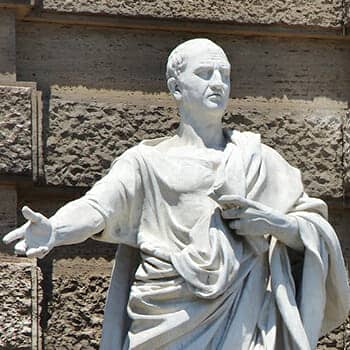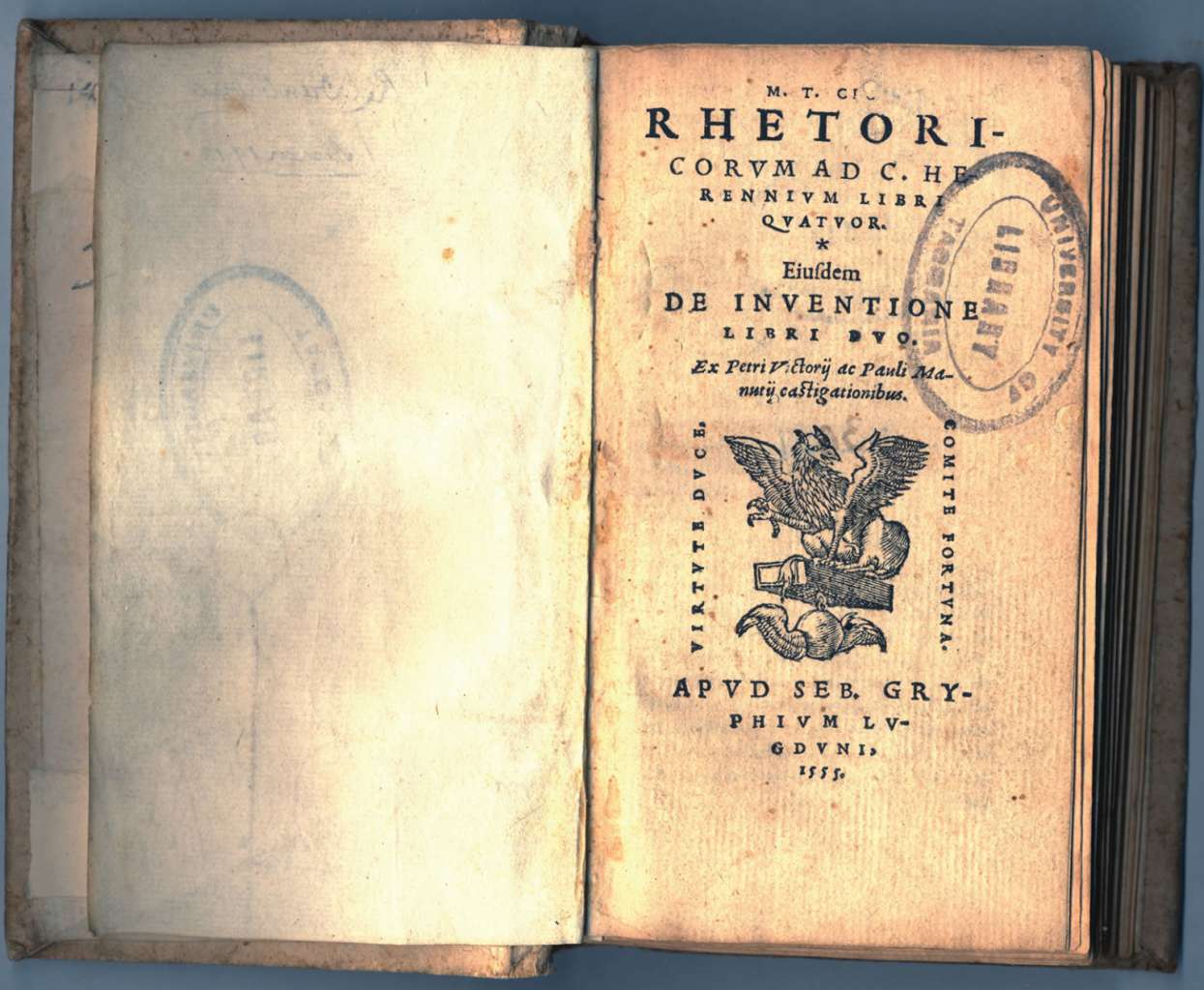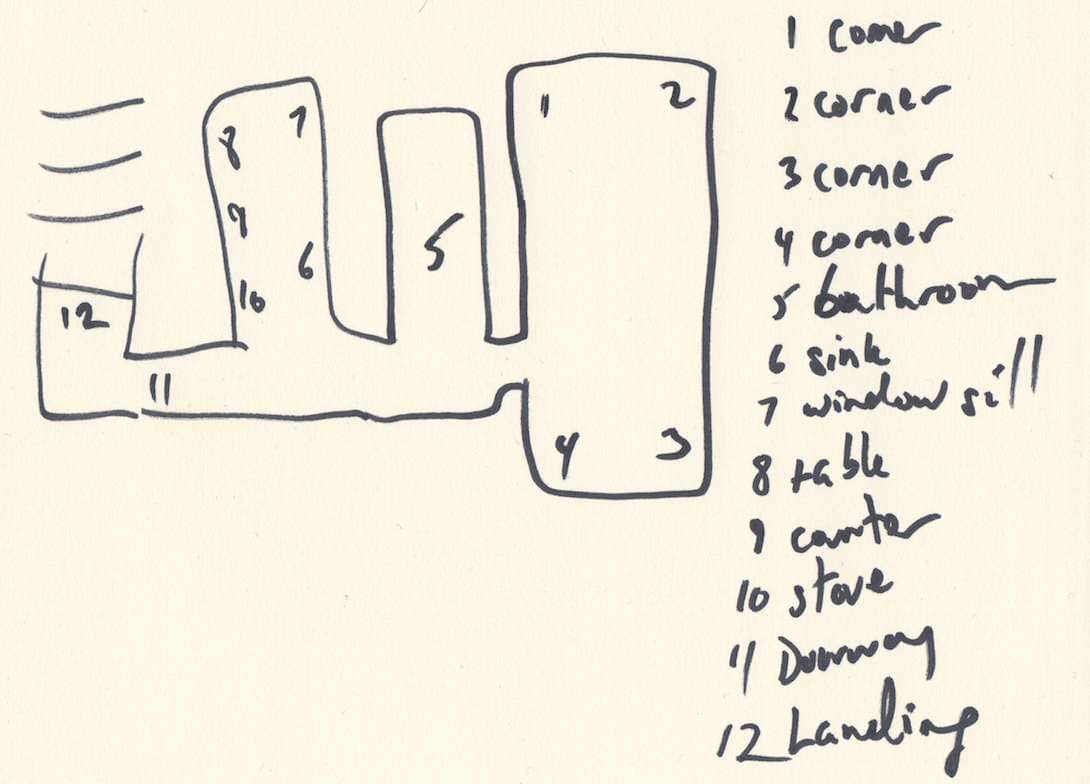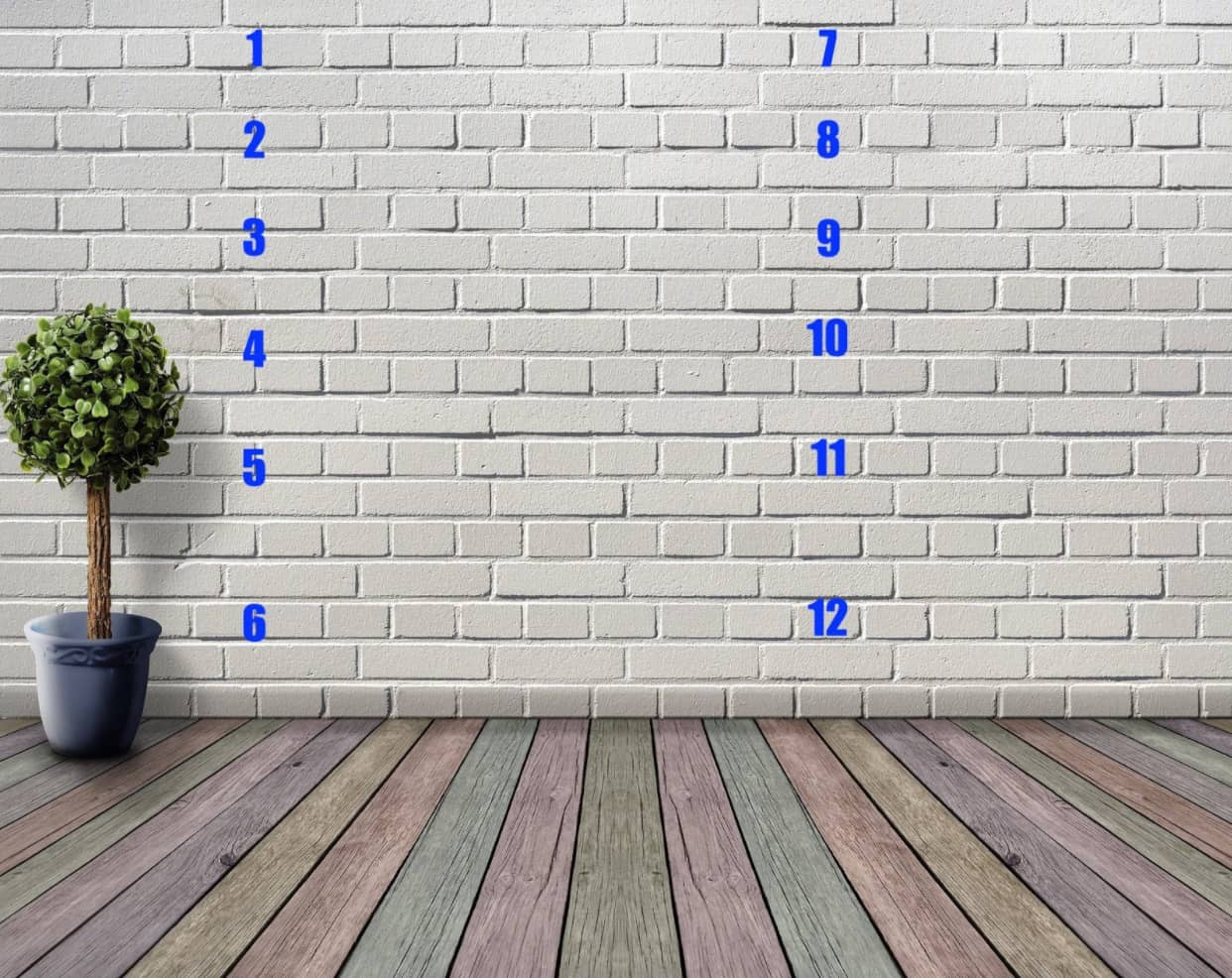 Few books accomplish as much as Rhetorica Ad Herennium.
Few books accomplish as much as Rhetorica Ad Herennium.
Originally thought to be written by Cicero, it’s a powerful book no matter who wrote it.
That’s because it teaches four main skills in the same book:
- Memory techniques
- Speech writing
- Speech delivery
- Speech analysis
Combined, those skills provide sheer power for anyone who wants to think critically, speak well and enjoy top notch memory skills.
How exactly does Rhetorica Ad Herennium deliver on these promises?
And how can you put the ideas into action in your own learning life and profession?
That’s exactly what we’re going to talk about.
Get ready for a powerful set of thinking and memory abilities as we dive into one of the best memory books ever written.
What Is Rhetorica Ad Herennium?
The title of this powerful guide literally means, “Rhetoric for Herennius.”
Who exactly Gaius Herennius was is unknown, but as you can read in this online version of the book itself, the author says he’s fulfilling Herennius’ desire for a “Theory of Public Speaking.”
Since giving presentations in public requires solid memory, the author shares some of the best tips for memorizing a speech I’ve ever seen.
The proof of the power in this book on the art of memory for speaking is easy to see too. My TEDx Talk uses both its rhetorical strategies and memory techniques, earning me 3.4 million views.
Some scholars think that the rhetoric parts of Rhetorica Ad Herennium are not as strong as what Aristotle offers in his Rhetoric.
That can be, but ultimately, I think the memory techniques in the Ad Herennium are more powerful than what we sometimes call Aristotle’s Nuclear Alphabet in his On Memory and Reminiscence.
Aristotle also addresses speaking in his writing on memory, but does very little on the Memory Palace technique compared to Rhetorica Ad Herennium.
At the end of the day, I think it’s great to read both. And I would not want to have to pick one over the other.
But the purpose of this article and because I’m currently studying Latin, not Greek, let’s let the favor fall on Rhetorica Ad Herennium.
How Did Rhetorica Ad Herennium Change Memory Techniques Forever?
According to James Murphy in A Synoptic History of Classical Rhetoric, the guidelines for delivering a speech suddenly appeared full-blown in Rome in 90 BCE, mostly in the form of this book.
Although surely the book is influenced by Aristotle, it divides the art of rhetoric into a unique set of parts:
- Exordium (use of anecdotes, quotes, and analogies to capture attention and introduce specific topics)
- Narratio (introducing the argument, thesis or point the speaker wants to prove)
- Divisio (discussing the main points, usually in overview form)
- Confirmatio (providing evidence that supports the main points)
- Refutatio (an attempt to refute any opposing evidence)
- Conclusio (summary of the speech)
You might think that none of that has to do with memory. But it’s a formula that is easy to understand and follow. It not only makes the speech easier for the speaker to remember. Thanks to this kind of organization, it’s easier for the listener to remember the points too.
When it comes to changing how we think about memory techniques, here are some of key ways I’ve found in this book about memory in Latin:
- The use of order in combination with mnemonic images
- Making the walls of your Memory Palaces “sticky”
- Writing into the walls of Memory Palaces
- Spacing your Magnetic Stations in the Memory Palaces effectively
- Focus on words first, concepts later
Thanks to these incredible ideas, many people went from amateurs with memory techniques to professional mnemonists. In some cases, practically overnight.
5 Valuable Teachings We Can Apply From Ad Herennium Today
As we go through this list, there’s no particular order of importance. The key strategy is to get the big picture and then start putting the tips into action.
Let’s dive in!
Tip #1: Use Order
Many people dive into memory training and wind up making chaotic Memory Palaces that follow no particular order. Even some of the most legendary authors, like Joshua Foer who wrote Moonwalking with Einstein tend to promote this mistake.
The author of the Rhetorica Ad Herennium stresses strategy and thinking up front. Rather than developing your Memory Palaces as you go, you design them in advance to avoid traps and anything that will trip you up during use.
I interpreted this tip and started to draw my Memory Palaces. This only takes a second, and I don’t mean “artistic” drawing. Just a simple sketch to help avoid issues.
As you can see in this example, I’ve managed to create a logical and linear journey. I don’t have to think about the Memory Palace while using it. Do this for yourself and all of your focus can go to learning and remembering using this powerful technique.
Tip #2: Make the Walls of Your Memory Palaces Sticky
Often we put no thought into the substance of our Memory Palace walls.
Although a subtle point, Rhetorica Ad Herennium suggests that you can make your Memory Palaces much stronger by giving them a sticky substance.
It’s possible he’s thinking of how Aristotle talked about keeping memories like birds in an aviary – something that would create a sticky mess on the walls indeed!
But all jokes aside, it’s a good idea and lends itself to the next point.
And you don’t have to stop with making Memory Palace walls sticky.
If it helps, you can turn them into many different substances, such as ice, wood, fire, clouds, etc. Heck, you could even imagine that the walls of your Memory Palace are made out of the moon.
Tip #3: Write Into The Surfaces Of Your Walls
In the ancient world, authors often scratched their ideas into wax tablets.
Aristotle had said that committing information to memory is kind of like impressing a seal into wax in his memory training book.
And this may be where the author of Rhetorica Ad Herennium got the idea to change the walls of his Memory Palaces into wax tablets.
Once you’ve done this, he suggests that you can image writing directly into their walls as an alternative to placing associations along a journey.
Although I rarely do this myself, it’s worth exploring. Sometimes there are pieces of information that are challenging. This simple strategy can help you get them into your memory anyway.
Tip #4: Spacing Your “Magnetic Stations” Effectively
The Memory Palace technique involves moving from one loci (location) to another. As you mentally travel your Memory Palace, you “trigger” the associations you’ve left on each station.
Or perhaps you haven’t “left” them at all. If you’ve made the Memory Palace walls sticky, perhaps you’ve stuck the associations in place.
Conversely, in the case of writing into the walls, you pause to “read” what you scratched into their surfaces.
Either way, Rhetorica Ad Herennium suggestions focusing on the exact distances between these Magnetic Stations. The books says it’s important to keep the distances relatively regular, not too far apart and not too close.
I’ve found this very helpful in my own practice, though I do bend the rules from time to time. It’s not just useful for speeches either. It’s highly recommended for anything you want to memorize, from anatomy to the unit circle and the solar system.
This point shows up in so many other memory books after Rhetorica ad Herennium, that in The Art of Memory, Frances Yates calls the suggestion the “Herennium Pattern.”
I think that’s a worthy name, especially since this book brings a lot more structure to the Memory Palace technique than the barebones legend of Simonides normally does in the historical record and stuff of legend.
Tip #5: Focus On Memorizing Words
I’ve saved the best tip for last.
The author of Rhetorica Ad Herennium must have dealt with a lot of students interested in the art of memory. He must have been asked frequently to help people memorize abstract concepts and other challenging information.
Here’s what he says:
“…lest you should perchance regard the memorizing of words either as too difficult or as of too little use, and so rest content with the memorizing of matter, as being easier and more useful, I must advise you why I do not disapprove of memorizing words.
I believe that they who wish to do easy things without trouble and toil must previously have been trained in more difficult things. Nor have I included memorization of words to enable us to get verse by rote, but rather as an exercise whereby to strengthen that other kind of memory, the memory of matter, which is of practical use. Thus we may without effort pass from this difficult training to ease in that other memory.”
In other words, there’s no point trying to memorize “meaning” until you can memorize individual words.
I agree, and all the more so because the meanings of words are also expressed in words. Plus, if you learn number systems for memory, like a 00-99 PAO, you’ll use words as well. The art of memory is all about words in the end.
The Real Art Of Memory
If you’re looking for the best book on using the art of memory authentically and well, you need Rhetorica Ad Herennium.
It’s no nonsense and it promotes taking action.
In fact, it advises that you don’t seek too many mnemonic examples. It promotes experimenting and experiencing instead, showing that even in 90 BCE, they knew the power of a well-formed learning cycle.
If you want to study memory in Latin, I recommend the Loeb bilingual edition. You can also find some of the memory books of Giordano Bruno and Robert Fludd in Latin as well.
But whatever you do, I highly recommend you read this one, not only for its memory techniques. It will also help you see how persuasive speakers operate and improve your own speaking ability.
And when you have all of these skills combined, your critical thinking goes up as your memory improves.
That makes this memory book from the annals of history a win-win!
Related Posts
- MMMP 009: Memory Training Consumer Awareness Guide
Here's an audio presentation of The Magnetic Memory Method "Memory Training Consumer Awareness Guide."
- Memory Athlete Braden Adams On The Benefits Of Memory Competition
Braden Adams is one of the most impressive memory athletes of recent times. Learn to…
- How Memory Works: A Guide Anyone Can Understand
Most guides make understanding how memory works too difficult. Learn the main types of memory…








